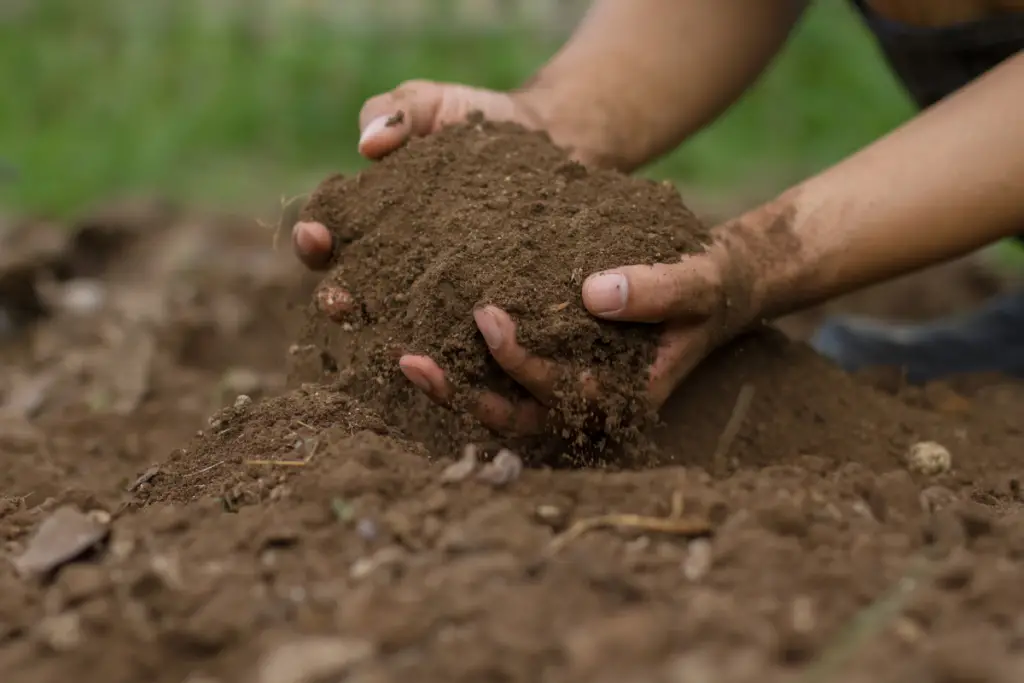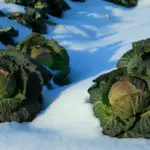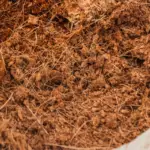Silt soil texture is an important aspect of soil science that is often overlooked.
Silt is a fine-grained soil particle that is between the size of sand and clay.
Silt particles are between 0.002 and 0.05 millimeters in diameter, making them larger than clay particles but smaller than sand particles.
Soil texture is an important factor in determining soil properties and fertility.
Silt soil texture can have a significant impact on soil properties, including water retention, drainage, and aeration.
Silt soils have a higher water-holding capacity than sandy soils, but they also tend to drain more slowly.
This can lead to problems with waterlogging and soil compaction.
Additionally, silt soils can be prone to erosion due to their fine particle size.
Understanding the properties of silt soil texture is crucial for farmers, gardeners, and land managers.
By understanding the characteristics of silt soils, they can make informed decisions about soil management, irrigation, and fertilization.
Soil texture can also affect crop yields and plant growth, making it an important consideration for anyone involved in agriculture or horticulture.

Table of Contents
Silt Soil Texture Overview
Silt soil texture is one of the three main soil textures, alongside sand and clay. It is characterized by particles that range in size from 0.002 to 0.05 mm in diameter.
Silt particles are larger than clay particles but smaller than sand particles.
Silt soil texture is important for agricultural and environmental purposes. It can be found in riverbanks, floodplains, and deltas, where it is deposited by flowing water.
Silt soil is often fertile and suitable for growing crops, but it can also be prone to erosion and compaction.
One of the key properties of silt soil texture is its water-holding capacity. Silt particles are small enough to create a large surface area, which allows them to absorb and hold water.
This makes silt soil texture ideal for crops that require a consistent supply of water.
Silt soil texture is also known for its ability to retain nutrients. The small particle size of silt allows it to trap nutrients and prevent them from leaching out of the soil.
This makes silt soil texture an important factor in soil fertility and crop productivity.
Formation of Silt Soil
Silt soil is formed from the weathering and erosion of rocks, minerals, and organic matter. It is a fine-grained soil that is intermediate in size between sand and clay.
Silt particles are larger than clay particles, but smaller than sand particles. They are typically between 0.002 to 0.05 mm in diameter.
Silt soil is commonly found in areas with moderate to high rainfall, where there is a lot of erosion and deposition occurring.
It is often found in river valleys, floodplains, and deltas, where it has been deposited by water.
Silt soil is also found in areas with high wind erosion, such as deserts and plains.
The formation of silt soil is influenced by several factors, including climate, topography, parent material, and time.
In areas with high rainfall, the soil is often leached of its nutrients, leaving behind a soil that is rich in silt.
In areas with low rainfall, the soil is often dry and compacted, making it difficult for silt to accumulate.
Topography also plays a role in the formation of silt soil. Areas with gentle slopes are more likely to accumulate silt, while areas with steep slopes are more likely to experience erosion and lose silt.
Parent material, or the type of rock and minerals in the area, can also influence the formation of silt soil.
Some rocks and minerals are more prone to weathering and erosion, which can lead to the formation of silt.
Over time, silt soil can become more compacted and dense, making it less suitable for plant growth.
This can be remedied through the addition of organic matter, which can improve soil structure and fertility.
Physical Properties of Silt Soil
Silt soil is a type of soil that is dominated by medium-sized particles. The particles in silt soil are smaller than sand particles but larger than clay particles.
Silt particles are between 0.002 and 0.05 mm in size. Silt soil is often found in river valleys and flood plains.
Texture
Silt soil has a fine-grained texture that is smooth to the touch. It is not gritty like sand or sticky like clay.
The texture of silt soil allows water to pass through it easily, but it also retains water well. This makes it a good soil for growing crops.
Color
Silt soil is usually gray or light brown in color. The color of silt soil is determined by the minerals that are present in the soil.
Silt soil can be rich in minerals such as iron and magnesium, which can give it a reddish or yellowish color.
Density
Silt soil has a moderate density. It is not as dense as clay soil, but it is denser than sand soil.
The density of silt soil can affect its ability to hold water and nutrients. Silt soil that is too dense can become waterlogged, making it difficult for plants to grow.
Porosity
Silt soil has a high porosity, which means it can hold a lot of air and water.
The porosity of silt soil depends on the size and shape of the particles. The more irregular the particles, the more porous the soil.
Porosity is an important property of soil because it affects the availability of water and nutrients to plants.
pH
The pH of silt soil can vary depending on the location and the minerals that are present in the soil.
Silt soil can be acidic, neutral, or alkaline. The pH of soil affects the availability of nutrients to plants.
Silt soil that is too acidic or too alkaline can make it difficult for plants to grow.
Chemical Properties of Silt Soil
Silt soil has unique chemical properties that affect its fertility, nutrient content, and overall health.
Here are some of the key chemical properties of silt soil:
pH Level
The pH level of silt soil is an important chemical property that affects the availability of nutrients for plants.
Silt soil typically has a neutral to slightly acidic pH level, ranging from 6.0 to 7.5.
This pH range is ideal for most plants, as it allows for the optimal uptake of nutrients such as nitrogen, phosphorus, and potassium.
Cation Exchange Capacity (CEC)
Cation exchange capacity (CEC) is a measure of the soil’s ability to hold onto positively charged ions such as calcium, magnesium, and potassium.
Silt soil has a moderate to high CEC, which means it can hold onto a significant amount of these essential nutrients.
This makes silt soil a good choice for growing crops that require a lot of nutrients, such as corn, wheat, and soybeans.
Organic Matter Content
Organic matter content is another important chemical property of silt soil.
Organic matter is made up of decaying plant and animal material, and it plays a key role in soil fertility and nutrient availability.
Silt soil typically has a moderate organic matter content, ranging from 2 to 5 percent.
This is lower than the organic matter content of loam or clay soils, but higher than that of sandy soils.
Nutrient Availability
Silt soil has a good balance of nutrients, including nitrogen, phosphorus, and potassium, which are essential for plant growth and development.
However, the availability of these nutrients can be affected by factors such as pH level, organic matter content, and soil moisture.
It is important to monitor these factors and adjust soil management practices accordingly to ensure optimal nutrient availability for crops.
Silt Soil and Plant Growth
Silt soil is a type of soil that is composed of a high percentage of silt particles.
According to Epic Gardening, silt soil is classified as silt soil if more than 80 percent of its composition is made up of silt.
This type of soil is typically found in areas that have experienced erosion or sedimentation.
While silt soil has some advantages, it also has some disadvantages when it comes to plant growth.
Silt soil has a high water-holding capacity, which means that it can retain moisture for a long time.
This can be beneficial for plants, especially during dry periods. However, silt soil can also become waterlogged, which can lead to root rot and other problems.
Another disadvantage of silt soil is that it can become compacted over time. This can make it difficult for plant roots to penetrate the soil and access the nutrients they need.
To prevent this, gardeners should work to keep the soil loose and aerated. This can be achieved through regular tilling or by adding organic matter like compost.
Despite these challenges, silt soil can be a good choice for certain types of plants.
According to The Science of Plants, silt soil is often rich in nutrients like phosphorus and potassium.
This can make it an ideal choice for plants that require these nutrients to grow, such as fruit trees and vegetables like tomatoes and peppers.
Cultivation Challenges in Silt Soil
Silt soil is a type of soil that contains a high percentage of silt particles, which are smaller than sand but larger than clay.
While silt soil can be fertile and productive, it also presents several challenges for cultivation.
In this section, we will explore some of the challenges associated with cultivating crops in silt soil.
Water Retention Issues
One of the primary challenges of cultivating crops in silt soil is water management. Silt soil has a high water-holding capacity, which means it can retain water for extended periods.
While this can be beneficial during dry periods, it can also lead to waterlogging and root rot if the soil becomes oversaturated.
To prevent water retention issues, farmers may need to implement drainage systems or use crops that are tolerant of wet conditions.
Additionally, adding organic matter to the soil can improve soil structure and increase water infiltration rates.
Compaction Problems
Silt soil is particularly susceptible to compaction due to its fine particle size.
Compaction can reduce soil porosity, limit water infiltration, and make it difficult for plant roots to penetrate the soil.
To prevent compaction, farmers may need to use reduced tillage practices, avoid overgrazing, and limit heavy machinery use.
Additionally, adding organic matter to the soil can improve soil structure and increase soil porosity.
Erosion Concerns
Silt soil is also prone to erosion, particularly during heavy rain events. The fine particle size of silt soil makes it more susceptible to erosion than soils with larger particle sizes.
To prevent erosion, farmers may need to implement conservation practices such as cover cropping, contour farming, and terracing.
Additionally, adding organic matter to the soil can improve soil structure and increase soil stability.
Improving Silt Soil Texture
Silty soil has a unique texture that can be improved by taking certain measures.
Here are some ways to improve the texture of silt soil:
Organic Matter Addition
One of the best ways to improve silt soil texture is by adding organic matter. Organic matter helps to improve soil structure and increase soil fertility.
Organic matter can be added to the soil in the form of compost, manure, or other organic materials.
When added to the soil, organic matter helps to increase the soil’s ability to hold water and nutrients, which can lead to better plant growth.
Proper Irrigation Methods
Proper irrigation methods can also help to improve silt soil texture. Overwatering or underwatering can lead to soil compaction, which can make it difficult for plants to grow.
Irrigating the soil at the right time and in the right amount can help to prevent soil compaction and improve soil texture.
It’s important to monitor the soil moisture level regularly to ensure that the soil is not too wet or too dry.
Use of Cover Crops
Cover crops can also help to improve silt soil texture. Cover crops are plants that are grown to protect the soil from erosion and improve soil fertility.
Cover crops can be planted in between growing seasons or as a companion crop with the main crop.
Cover crops help to improve soil structure by adding organic matter to the soil and increasing soil aeration.
Silt Soil in Different Regions
Silt soil is a type of soil that has a fine texture and is made up of mineral particles that are larger than clay but smaller than sand.
It is commonly found in river valleys, floodplains, and areas with low topography.
In this section, we will explore the characteristics and distribution of silt soil in different regions.
North America
Silt soil is common in the Midwest and Great Plains regions of the United States. It is also found in the Mississippi River Valley and other river valleys throughout the country.
These regions are known for their fertile soil and are important agricultural areas.
Europe
Silt soil is found in many parts of Europe, including the Netherlands, Belgium, and Denmark.
These regions are known for their highly productive agricultural lands and are major producers of wheat, barley, and other cereal crops.
Asia
Silt soil is found in many parts of Asia, including the Ganges River Valley in India, the Yangtze River Valley in China, and the Mekong River Valley in Southeast Asia.
These regions are important agricultural areas and are major producers of rice, wheat, and other crops.
Africa
Silt soil is found in many parts of Africa, including the Nile River Valley in Egypt and the Niger River Valley in West Africa.
These regions are important agricultural areas and are major producers of crops such as cotton, maize, and sorghum.
Environmental Impact of Silt Soil
Silt soil can have both positive and negative impacts on the environment.
Here are some of the ways in which silt soil affects the environment:
Positive Impacts
- Fertility: Silt soil is rich in nutrients and organic matter, making it highly fertile. This soil type is excellent for growing crops, and it is often used for agriculture.
- Water Retention: Silt soil has good water retention properties, which means it can hold onto moisture for longer periods. This is beneficial for plants and can help to prevent soil erosion.
- Natural Habitat: Silt soil is a natural habitat for many plants and animals. The soil provides a good environment for microorganisms, earthworms, and other beneficial organisms that help to maintain soil health.
Negative Impacts
- Erosion: Silt soil is highly susceptible to erosion, particularly when exposed to wind and water. This can lead to soil degradation and loss of fertility. Erosion can also cause sedimentation in rivers and other bodies of water, which can damage aquatic ecosystems.
- Compaction: Silt soil can become compacted over time, which can reduce its fertility and water retention properties. Compaction can also make it difficult for plant roots to penetrate the soil, which can limit plant growth.
- Pollution: Silt soil can become contaminated with pollutants such as heavy metals, pesticides, and fertilizers. This can have negative impacts on both human health and the environment.
Conclusion
Silt soil texture is an important factor in determining the physical and chemical properties of soil.
It is characterized by its fine particle size, which falls between that of sand and clay. Silt soil has a high water-holding capacity, but it also drains well.
Silt soil is often found in river valleys and floodplains, where it is deposited by water. It is also commonly found in loamy soils, which are a mixture of sand, silt, and clay.
Silt soil is rich in nutrients and organic matter, making it ideal for agriculture.
When it comes to managing silt soil, it is important to maintain its structure and prevent erosion.
This can be achieved through the use of cover crops, conservation tillage, and other soil conservation practices.
It is also important to monitor soil fertility levels and adjust management practices accordingly.
- How to Dry Basil Leaves: A Professional Guide
- Is an Avocado a Fruit or Vegetable? Simple Answer and Explanation
- Does Pineapple Have Seeds? Exploring the Anatomy of Pineapples
- Blooming Through Winter: Can I Grow Vegetables Indoors in the Winter?
- What Can You Grow in a Greenhouse All Year Round: A Guide to Year-Round Greenhouse Gardening
- Are Blueberries Blue? Debunking the Myth of Their Color
















